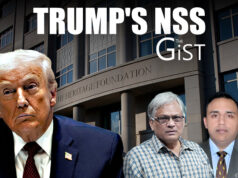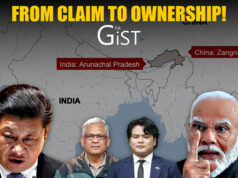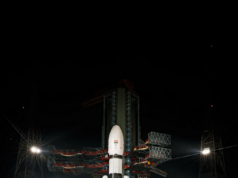In a significant diplomatic development, European leaders are set to join Ukrainian President Volodymyr Zelenskyy in Washington for a crucial meeting with US President Donald Trump on Monday. The move comes as Trump, having recently met Russian President Vladimir Putin in Alaska, is reportedly pushing Kyiv to accept a quick peace deal to end Europe’s deadliest war in eight decades.
Trump’s recent shift in tone — leaning more towards Moscow’s stance and seemingly sidelining a ceasefire-first approach — has raised concerns among Ukraine’s European allies. With over a million people dead or wounded in the ongoing war, the urgency to find a resolution is palpable. However, the terms reportedly being considered have left Kyiv and its backers wary of a lopsided settlement.
Pressure Mounts On Zelenskyy
According to sources, Trump and Zelenskyy will hold a bilateral meeting ahead of the larger multilateral talks involving European leaders. The White House has not confirmed the schedule. European Commission President Ursula von der Leyen, German Chancellor Friedrich Merz, French President Emmanuel Macron, British Prime Minister Keir Starmer, Italian Prime Minister Giorgia Meloni, and Finnish President Alexander Stubb are among those expected to join the discussions.
The diplomatic push from Europe aims to bolster Zelenskyy’s hand, especially in light of his difficult last encounter with Trump and Vice President JD Vance in February, where he was publicly criticised. European allies want to ensure Ukraine is not forced into an agreement that could jeopardise its sovereignty and long-term security.
Trump, meanwhile, has been active on his Truth Social platform, suggesting that Ukraine could end the war “almost immediately, if he wants to,” while implying that reclaiming Crimea and NATO membership are off the table for Kyiv. “Remember how it started. No getting back Obama given Crimea (12 years ago, without a shot being fired!), and NO GOING INTO NATO BY UKRAINE. Some things never change!!!” he posted.
Controversial Deal
Reports suggest that Trump and Putin discussed a potential peace framework under which Russia would cede small portions of occupied territory, while Ukraine would surrender large swathes of the fortified eastern region — including the rest of Donetsk — and agree to freeze the current front lines.
In exchange, Ukraine would receive some form of security guarantees from the United States, reportedly styled like NATO’s Article 5. Trump’s envoy Steve Witkoff said on CNN that it was “the first time we had ever heard the Russians agree to that,” indicating that Moscow is open to offering such guarantees in place of Kyiv’s NATO aspirations.
However, the credibility of these assurances remains questionable. Ukraine’s borders were supposedly guaranteed when it surrendered its nuclear weapons in 1994 — a promise that failed to prevent Russia’s annexation of Crimea in 2014 or the full-scale invasion in 2022.
Russia’s envoy to international organisations in Vienna, Mikhail Ulyanov, acknowledged that any future agreement must include security guarantees for both Kyiv and Moscow. “Russia agrees with that. But it has equal right to expect that Moscow will also get efficient security guarantees,” he said on social media platform X.
US Secretary of State Marco Rubio, speaking to CBS, said, “If peace is not going to be possible here and this is just going to continue on as a war, people will continue to die by the thousands … we may unfortunately wind up there, but we don’t want to wind up there.” He confirmed that the US saw “enough movement” in the Alaska talks to justify this follow-up engagement.
European Caution And Support
European leaders, while welcoming Washington’s talk of security guarantees, have firmly stressed that no deal involving territorial concessions can proceed without Ukraine’s full consent. “You cannot negotiate peace under falling bombs,” Poland’s foreign ministry said in a statement, criticising Trump’s shift away from a ceasefire-first approach.
A joint statement by Britain, France, and Germany reaffirmed that their leaders are ready “to deploy a reassurance force once hostilities have ceased, and to help secure Ukraine’s skies and seas and regenerate Ukraine’s armed forces.” This security plan, long under discussion in European capitals, aims to provide a meaningful alternative to NATO membership while preserving Ukraine’s strategic independence.
Zelenskyy, posting on X after Sunday’s meeting, confirmed strong backing from Europe. “Everyone agrees that borders must not be changed by force,” he said. He further added that any security guarantees “must really be very practical, delivering protection on land, in the air, and at sea, and must be developed with Europe’s participation.”
Despite the diplomatic flurry, the path ahead remains fraught. Putin has reportedly briefed Belarusian President Alexander Lukashenko and Kazakh leader Kassym-Jomart Tokayev about the Alaska summit, indicating Moscow’s interest in a broader regional alignment. A source familiar with the discussions claimed that Trump relayed to Zelenskyy a Russian proposal to freeze the front lines if Kyiv surrendered all of Donetsk — a proposal the Ukrainian president firmly rejected.
Trump, meanwhile, reiterated his view that Ukraine should act quickly. “Russia is a very big power, and they’re not,” he said, urging a swift deal.
As the Monday talks loom, all eyes are on Washington to see whether diplomacy can prevail over force — and whether the emerging peace framework will honour the principle of justice or merely offer a fragile truce built on compromise.
(With inputs from Reuters)




